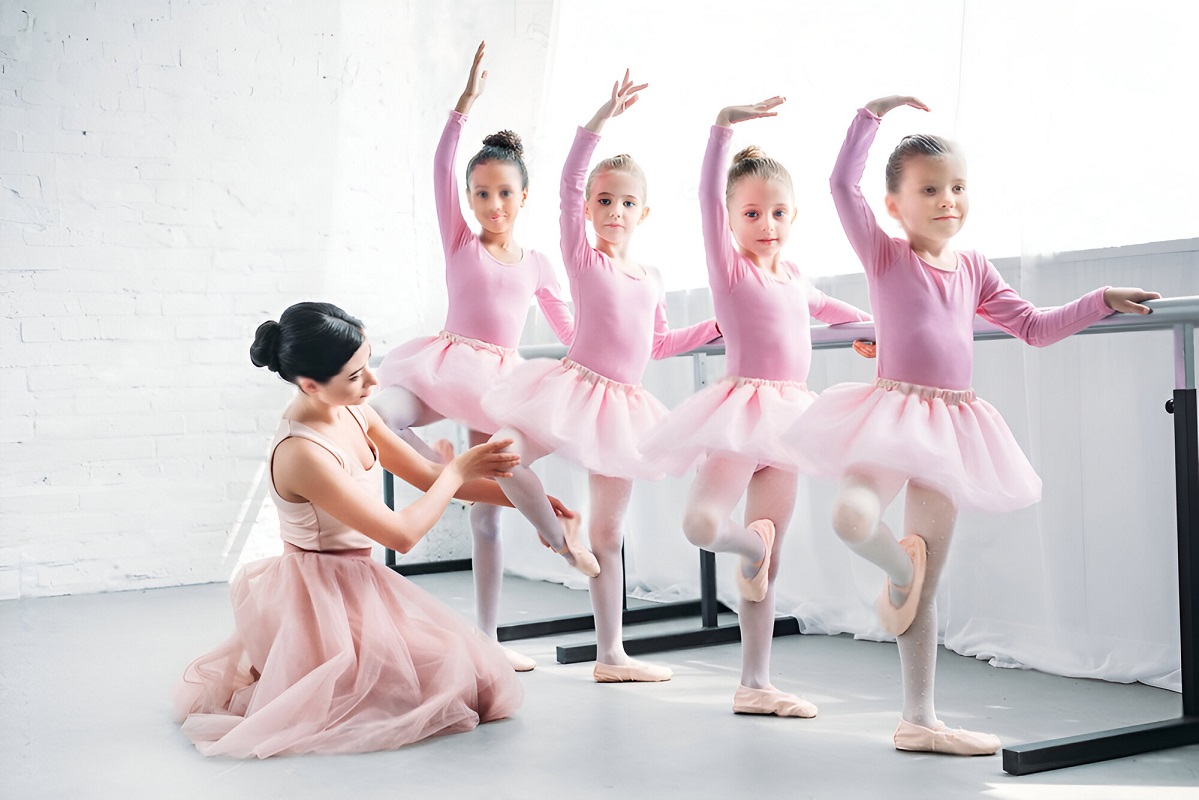
Enrolling your child in their first ballet class is a joyful and exciting milestone. At our dance studio, we understand how crucial these first experiences are in shaping your child’s confidence, discipline, and love for the performing arts. This comprehensive guide outlines everything you need to know before stepping into the studio. For more tips on how to get ready, read our full guide on PREPARING FOR YOUR CHILD’S FIRST BALLET CLASS.
Key Takeaways:
- Structure Matters: Ballet classes follow a predictable structure—warm-up, barre work, center practice, and cool down—to build skills progressively.
- Dress the Part: A proper uniform (leotard, tights, ballet shoes) ensures safety, comfort, and discipline.
- Ballet Teaches More Than Dance: Children also learn focus, etiquette, and respect from day one.
- Parents Stay Outside: Most studios ask parents to wait outside to encourage independence and minimize distractions.
- Consistency Builds Confidence: Regular attendance helps young dancers feel secure, learn faster, and enjoy the process.
Understanding the Structure of a Beginner Ballet Class
Warm-Up and Introduction (5-10 Minutes)
Children are welcomed with a light warm-up to engage their muscles and establish classroom etiquette. Teachers often introduce themselves and explain expectations in simple, encouraging terms. This sets a respectful and focused tone for the session.
Barre Exercises (10-15 Minutes)
Young dancers learn basic positions and movements using the barre. This phase builds foundational strength, posture, and coordination. Children may practice pliés, tendus, and relevés in a slow and supportive format.
Center Practice and Across the Floor (15-20 Minutes)
This section introduces balance, spatial awareness, and movement through the studio space. Children might learn simple traveling steps, turns, or jumps while following the instructor’s lead in short combinations.
Creative Movement and Cool Down (5-10 Minutes)
To close the class, dancers often engage in expressive movement. This promotes creativity and confidence while reinforcing the joy of dance. A gentle cooldown ensures safe stretching and transitions students out of active movement.
What to Wear: Dress Code for Ballet Beginners
- Leotard: Typically pink or black with a simple design, often short-sleeved or tank-style.
- Tights: Convertible or footed pink tights are preferred for ease and cleanliness.
- Ballet Shoes: Soft pink leather or canvas slippers with elastic straps.
- Hair: Neatly secured in a bun or ponytail to avoid distraction.
Studios may provide specific dress code requirements—always consult the studio’s handbook before class.
What Your Child Will Learn in Their First Ballet Class
Ballet Etiquette and Studio Behavior
Children are gently introduced to the rules of the studio:
- Respect for instructors and classmates
- Raising hands to speak
- Waiting turns with patience
- Listening with attention and stillness
Basic Ballet Terminology
Even young dancers will start to hear and use essential ballet terms like:
- Plié – to bend
- Tendu – to stretch
- Relevé – to rise
- Port de bras – movement of the arms
This early exposure lays the groundwork for long-term learning.
How to Support Your Child Emotionally and Practically
Separation Anxiety
It’s common for children to experience nervousness. A short and confident goodbye often eases the transition more effectively than lingering.
Praise and Encouragement
Celebrate small victories after each class. Whether it’s remembering a term or mastering a new movement, positive reinforcement builds confidence and a love for dance.
Consistency is Key
Regular attendance helps your child feel more secure and familiar in the classroom setting. Establish a pre-class routine to reduce anxiety and increase excitement.
Parental Role During Class Time
Parents are typically asked to wait outside the studio. Observation windows or designated class-watch days allow families to monitor progress without disrupting instruction.
Pro tip: Use the wait time to observe class structure and note feedback from instructors. Post-class conversations with your child can be more enriching with this insight.
Questions to Ask Your Studio Before the First Class
- Is there a specific uniform required?
- Should we arrive early to check in?
- Are there viewing days or end-of-season performances?
- How do you handle shyness or tantrums?
- What is the class size and student-teacher ratio?
Common Challenges and How to Handle Them
Shyness or Reluctance
Normalize these feelings. Remind your child that new things can feel strange at first. Encourage them to try again next week, and avoid quitting too soon.
Difficulty Following Instructions
It’s developmentally normal for young children to test limits. Teachers are skilled in redirecting attention and modeling behavior. Progress often appears in small, consistent steps.
Benefits of Ballet for Young Children
- Physical Development: Improved posture, coordination, and flexibility
- Mental Focus: Strengthened memory and concentration through choreography
- Social Skills: Respect, teamwork, and communication
- Emotional Expression: A creative outlet for self-expression and joy
Setting the Stage for a Lifelong Love of Dance
The first ballet class is more than an introduction to movement—it’s a stepping stone into a world of discipline, artistry, and confidence. By preparing your child and knowing what to expect, you’re empowering them to thrive in an environment that nurtures body and mind alike.
Whether your child dances for a season or a lifetime, the experience of their first ballet class will shape their sense of self, poise, and grace. Let’s begin this beautiful journey—step by step, with pointed toes and open hearts.
What if my child is too shy or cries during class?
Shyness is completely normal. Instructors are experienced in gently helping children acclimate. Most children adjust after a few classes with consistent encouragement and routine.
Does my child need prior dance experience to join?
No prior experience is needed. Beginner ballet classes are designed for absolute newcomers and focus on basics, fun, and confidence-building.
How long is a typical first ballet class?
Classes usually last 30 to 45 minutes, depending on age group. Sessions are structured to match the attention span and energy level of young children.